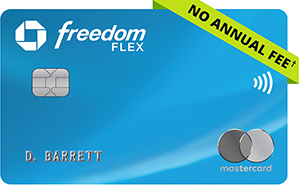Strategies to Increase Your Credit Score and Why it Matters
Taking steps to increase a credit score can lead to many positive financial returns in the future. Whether it’s cultivating a score that creates eligibility for premium credit cards with lucrative rewards or receiving the best interest rate on a bank loan. Both options lead to more money in your pocket. Before providing options for increasing a credit score, let’s take a deeper look at both examples referenced above.
Premium Credit Cards and Credit Score’s Impact
There are dozens of options out there for credit cards. It’s great for consumers but can be tricky to navigate all of the offers. This is why we provide an up-to-date resource that ranks the best card options for our readers! Regardless of which credit card a person chooses to use, using one for everyday purchases is a no-brainer when compared to cash or debit.
The most basic example of this can be seen by looking at the Chase Freedom Unlimited Card.

This card offers 1.5% Cashback on all purchases. If I spend $500 a month on all of my expenses. After 12 months, that is $6,000 spent and $90 in cash back earned plus an additional $200 signup bonus. This may not seem like a lot of money but it’s important to note that it’s FREE money that I would not have had if I were paying cash. Basic Travel Strategies are essentially using premium credit cards which require great credit scores. You can find more information on how learning how to utilize credit card reward points in our course HERE.

Bank Loans and Credit Score’s Impact
Whether you are looking at borrowing for a car, home, or personal loan. The likelihood of being approved and paying a low-interest rate will directly be influenced by the applicant’s credit score. The main point that I’d like to get across here is that low-interest rates matter! For example, a $100,000 house at a 30 year fixed mortgage will COST a different amount depending on the applicant’s credit score. Take a look at the boxes below to see the breakdown in the difference of monthly payments based on the applicant’s credit score. The difference between the top credit bracket and the lowest is $93 additional per month and $33,393 in interest over the duration of the loan. Remember that this is only for a $100,000 house and the numbers will be even larger for a more expensive property!
$33,393 Extra all due to a 3 digit number!
The difference between the top credit bracket and the lowest is $93 additional per month and $33,393 in interest over the duration of the loan. Remember that this is only for a $100,000 house and the numbers will be even larger for a more expensive property!
Now that we have seen WHY it’s important to increase a credit score, let’s look at some strategies that can be taken today to move that score into the correct direction.
5 Basic Steps to Increase a Credit Score
5 – Review Credit Report for Inaccuracies
Step one is to download a copy of your credit score and review it for any inaccuracies. Through our Credit Rebuild Service, we have discovered mystery accounts that are should not be on the reports. Sometimes these are accounts that are owned by someone with a similar name or even a relative. Any inaccuracies that are found can then be disputed with the three credit reporting agencies; Experian, Equifax, and Transunion. You can receive each Credit Report for FREE every year via Federal Law HERE at Annual Credit Report.
4 – Address Negative Remarks
If there are any outstanding debts that have gone to collections it will be important to address these as soon as possible. Reach out to the agency and settle the amount owed. It is even possible to have the negative remark removed from the credit report by including that in the settlement. Be sure to ask specifically for it to be removed and get it in writing before paying.
3 – Set All Bills to AutoPay
No one is perfect and it can be extremely difficult to remember when each payment date is due every month. Log into every single account and set up a reoccurring autopay for the minimum payment that is due each month. This will ensure that no more late payment negative remarks are added to the credit report. If you do happen to miss a payment, most banks will delete it from your report if you call them and ask for a “courtesy” or “goodwill” removal. Be sure to pay the minimum payment before calling the bank to get the account bank into good standing!
2 – Pay Down Credit Cards
If there are any Credit Cards that are reporting high balances it will be important to pay these down. 30% of the Credit Score is calculated based on the utilization of credit. In order to get the utilization to be in good standing, it will be important to pay down the balances to at least 10% of the overall credit limit. For example, if the credit limit is $1,000, 10% would be $100. For larger debts, it is wise to consider a 0% APR Balance Transfer Card Card or Personal Loan. Given that Credit Card interest rates range between 14-24% moving to a lower percentage will save major money in the long run.
1 – Open a New Credit Card
The number one step to increasing a credit score is showing the banks and the FICO algorithm that a new account can be managed responsibly. By opening a new card and making on-time payments the Credit Score will increase. This is due to Payment History accounting for 35% of the Credit Score Algorithm. I suggest opening a 0% APR Credit Card Offer that charges no interest for a promotional time period. There are many offers that range from 12-18 months that can be found HERE. After opening, charge everyday expenses and pay it down each month leaving only $10-$20 remaining when the statement closes. Pay the minimum amount and watch the score climb!
I hope that these strategies help to cultivate a game plan for increasing a credit score. If you would like a personalized approach to rebuilding credit, please take a look at our Credit Rebuilding Service found HERE. Any other questions, please feel free to Reach Out To Us or comment below.




